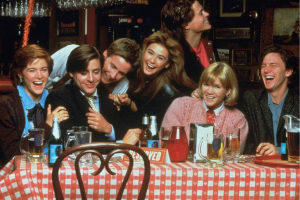I rarely write about politics because I don’t like the potential of alienating half of my friends.
During the presidential campaign and yesterday’s results, my anecdotal evidence is that about half of my social media friends wanted Mrs. Clinton to win and about half wanted Mr. Trump to win. Another way of viewing the results is that about half of my friends were voting against the other candidate. Just like the country.
I’ve seen some of my friends call each other names and impute extraordinarily negative motivations to their (and my) friends—the “other half” of the voting public. Today, I’m seeing posts about “gloating” and “not gloating.” Today, I’m reading posts with the hashtag “not my president.” Today, I’m reading posts about how some of my friends are happy and some of my friends are terrified.
I’m writing today to try to think about, and in humility, provide an answer to the question that many are asking, “How do we unite and move forward?”
In some respects, mediators see this type of thing all of the time. In the litigated case, parties to a lawsuit describe each other in less than flattering terms: the other breached a contract, the other is a slanderer, the other was deceptive in the goods and services that were (or were not) provided, the other violated my trust. And the list goes on, and all of these statements are made in public filings. Yet, over 90 percent of the time, the people and organizations in litigated cases come together, reach an agreement, and settle the dispute. Despite the public name calling and the differences, they reach an agreement. It is possible.
A friend and one of my professional role models has a mantra that goes something like this: at first, assume good intentions. While political disagreement can be (but should it be?) heated, can we look past the labels and assume good intentions?
The Clinton campaign’s slogan was “Stronger Together.” This has echoes of our nation’s traditional motto, e pluribus unum—one from many. E pluribus unum is part of the Great Seal of the United States. The thought was that out of many states, one nation emerges. Is it possible that it can also mean that out of many people, no matter their circumstances, one nation is created?
The Trump’s campaign slogan was “Make America Great Again.” This has echoes of what political scientists describe as retrospective voting, where voters take into consideration what has happened and how political parties, or an officeholder, performed in the past. Is it possible that the slogan’s focus is on greatness, expanding the pie, and making things better for people?
Who would run on or support a slogan of “Weaker Individually” or “Turn this country into a heaping pile of rubble”? No one. Both candidates, if we assume good intentions, want something better for this country. And if they are true to their slogans, shouldn’t the followers of the respective candidates continue with the thought that we are better when we come together, and together, we can do good and even great things?
If we assume good intentions, we can choose to view each other’s passion as a common good, in mediation terms, a shared interest. We are passionate because we care about things. Perhaps we care about a particular party or candidate, but I choose to decide that we can go deeper, and perhaps, just perhaps, we are passionate about something higher, our country. Perhaps we all love our country, all 59,465,161 who voted for Mrs. Clinton and all 59,276,320 who voted for Mr. Trump (at the time of this writing). Maybe what is driving the passion and the heat is a shared interest by all 118,741,481 Americans who took time out of their too-busy schedule to stand in line and vote.
Some of my social media friends—whom I truly view as friends—are saying things about 59 million people that are, to me, shocking. I know that some of my friends are hurt and disappointed, while some other friends are ecstatic. So how do we bridge the seemingly insurmountable gap?
In the religion that I believe in, my God manifested himself on this planet for a short period of time. During that manifestation, Jesus provided examples of dealing with people who were different, or who weren’t good enough according to some. Negative labels were present then. What did he do? He ate with those people. He talked with them. Sometimes, he remained silent when they were saying terrible things about Him. He told us to love our neighbors as we love ourselves. I know some of you aren’t religious, or may not share my view of religion. That’s okay. I still like you and I hope you like me. My point is that the Christ that I try to study can give us guidance in times like this. If we’re going to move on, come together, and unify, it has to start with small steps, like sitting down with someone who doesn’t share your point of view. Listening to them to understand them, not to debate them. Seeing them as a human being—and not a stereotypical label—who has a different movie playing in their mind, all the while assuming that your friend is someone of good intentions. Treating them as you’d like to be treated.
What’s the saying, We want justice for others, but mercy for ourselves?
In my experience, it is difficult to persuade someone to change their point of view by name calling. Who wants to break bread with someone when the other is calling you a terrible name? “Suzy, I’d love to have a coffee with you, but are you sure you want to be seen in public with an ignorant, xenophobic, homophobic, lazy, country-hater, cattle thief, slanderer, corrupt criminal? I mean, if you’re up for that, I’ll gladly see you at Starbucks on Thursday!” Said no one ever.
To move forward and unite, I respectfully suggest that we ditch the negative labels, assume good intentions, and invite someone who views the world in a politically different way to coffee (or lunch or dinner). You’ll get a good jolt of caffeine (or decaf if that’s your preference), perhaps a good meal, and you might see the “other” as a person instead of a label. These are our friends, after all, whom we have decided are worthy of sharing our work accomplishments, our family memories, and photos of our pets and meals.
Many pundits are telling us that yesterday’s result was historic and suggestive of a movement. Let’s create our own movement and a history that will lead to encouragement. Let’s engage with others, one coffee or meal at a time, with an open mind to understand our shared interests and our good intentions, all the while viewing each other as humans—God’s unique and wonderful creations—instead of as unhelpful, inhuman labels.


 I’m pleased to announce that
I’m pleased to announce that 
